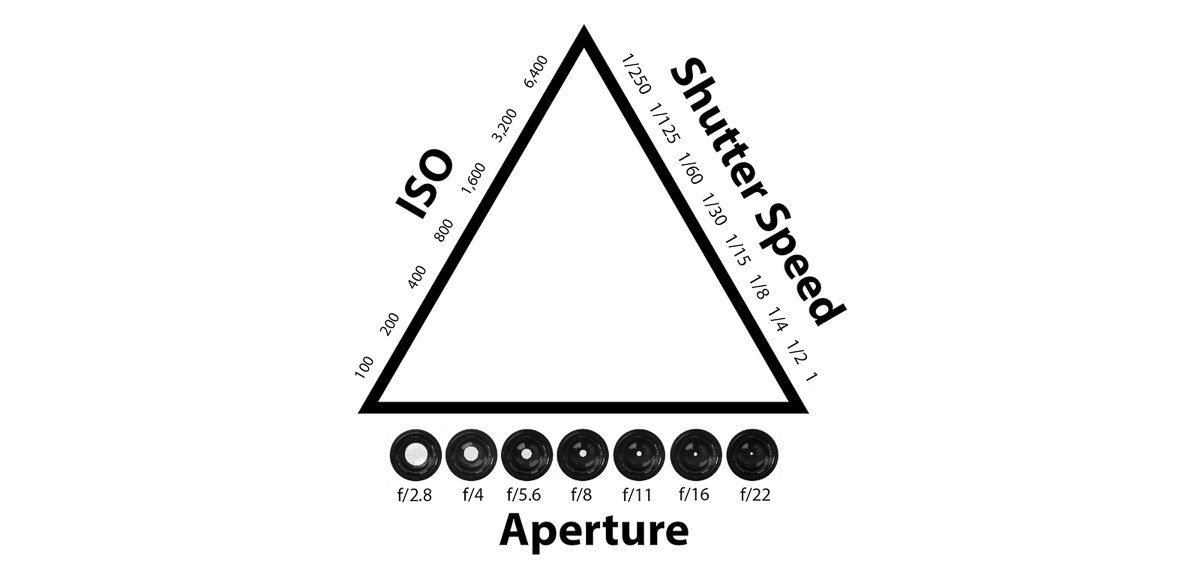Camera Settings, and Why They Matter
Wanting to get into photography is one thing, but mastering your camera is a whole different kettle of fish instead. In this blog I’ll be going through and explaining various camera settings, and why they matter.
Simply put, the settings input on your camera when taking a shot can provide the difference between a good photo, and a great one. Under expose and the photo will just be completely blown out, focus on the wrong part of the image and the photo will just be a blurry mess.
In order to combat and tackle this situation, your best chances of creating a picture perfect photo is to follow the equation of the Exposure Triangle. The Exposure Triangle relates to three factors which contributes and adjusts how a camera captures light, with those variables being Shutter Speed, Aperture and ISO, all of which combine and work together to enable your photos to be adequately exposed.
Shutter Speed
The first variable needed to understand the exposure triangle is shutter speed. Shutter speed relates to the amount of time the camera sensor is exposed to the light, which in turn is calculated in fractions of a second. For example, a shutter speed of 1/100 holds the shutter open for one hundredth of a second. Simply put, the longer the shutter speed is in time the more light is let in, and on the flipside, the shorter in time it is, the less light is let in.
Not only does it affect the exposure, the shutter speed is also key to how you capture movement within your photos. The lower you set your shutter speed, the more motion blur your camera will capture. Depending on if it’s your actual intention or not, setting low shutter speeds such as 1/100 and lower are great to capture long exposures and trailing lights from moving subjects, however using such shutter speeds when just wanting to capture a normal photo isn’t recommended, as a slight moving of the camera when taking a shot can cause the outcome of a blurry photo and a visual mess.
Shot at 1/40s
At the other end of the scale, setting shutter speeds such as 1/1000 act as a freeze frame and can leave your photos looking crisp. Good examples why you would use a higher shutter speed as such is for capturing rain drops or the flow of the waves, each of which move and act at a much faster speed. However the downside of this is the camera will also let in less light, therefore creating a much darker shot.
Shot at 1/1000s
Aperture
The next factor which is key to correctly exposing your photos is the aperture. Aperture is means the opening or hole, and in this case the aperture of a camera lens is a hole that dictates how much light passes through to the sensor. When you press the shutter button on the camera, the aperture opens up to the set width and therefore lets in a certain amount of light.
The width of camera lens’ aperture is measured in f/stops, and is written in numbers such as 1.4, 2, 2.8, 4, 5.6, 8, 11 and 16. The wider and larger apertures like f/1.4 let in more light, whereas smaller apertures such as f/16 let in less light.
Aperture plays an important role within the exposure triangle as it regulates the depth of field and focus set upon your subjects. When using smaller apertures such as f/16 it allows and creates a deeper depth of field, therefore allowing more of the photo frame to be in focus. On the other hand, wider apertures for example f/1.4 produces a much narrower and shallower depth of field, which is great for allowing blurred backgrounds and bokeh within your photos.
Shot at f/1.4
Shot at f/22
ISO
The third and final component of the exposure triangle is the ISO. The ISO is important as it determines how sensitive the camera sensor reads the light. The ISO is measured in values such as 100, 200, 400, 800, 1600 etc.
The amount of ISO conducted within a shot plays an important role and factor in how much light a photo is exposed too. At the lower end of the scale, and ISO value of 100 makes the camera sensor become less sensitive to light, however then at the upper levels of the scale, an ISO value of 1600 and above for example enables the camera sensor to become much more sensitive the light.
ISO is an incredibly important factor when it comes to shooting photography and also videography, of course in darker situations you’ll need to bump up the ISO, however it could come at an extra cost. Leaving yourself and the ISO over cooked can lead to your shots becoming over exposed, and therefore draining all the highlights & shadows out of the shot, leaving little to no contrasts, and your images blown out and barely usable.
Shot at ISO 100
Shot at ISO 5000
When all is said and done, your camera settings, and in particular the exposure triangle play a pivotal role in the world of photography and videography. It may take some time and fine-turning, however with a degree of experimentation and adjustments, you’ll find yourself becoming accustomed to how the three variables of shutter speed, aperture, and ISO work together, and how you can use and play around with all three to your advantage to create the vision of images you wanted.







